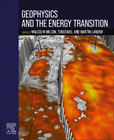
Geophysics and the Energy Transition involves four sections: What is the Energy Transition and why storage so important; selecting sites for storage; advanced monitoring technology; and moving forward to integrating Carbon Capture and Storage (CCS) within the Energy Transition. Geophysics will also play a role in finding and developing alternatives to fossil fuels such as natural hydrogen and geothermal using much of the knowledge gained from the CO2 storage industry. To provide the public and others with the confidence to move forward with a structured and cost-effective energy transition, this book provides the necessary evidence that we can store CO2 safely and effectively and use this as a significant component of the energy transition.?We can also find and store new energy sources. ? Geophysics and the Energy Transition is written by experts in the field who have practiced the science and engineering associated with the subsurface for years. CCS is an integral component of the new energy transition but the application of Geophysics in the future will extend well beyond CCS if we are going to transition successfully to a carbon neutral environment. Science, engineering, and technology applications are important for site selection, characterization and monitoring to assure safe storage in the subsurface and energy sustainability in the future.? Presents an overview of the available technology, along with specific applications and scenarios in which to use the technology? Features case studies to provide practical applications for those geoscientists and engineers in the energy industry? Includes an overview to provide context for the energy transition? INDICE: Section 1: The Energy Transition: 1. Introduction to the Energy Transition2. Technologies Involved in the Energy Transition3. Preventing CO2 from Fossil Fuels from Reaching the Atmosphere4. Subsurface CCSSection 2: Selecting Sites and Ensuring Effective Storage 5. An Engineering Perspective on the Need for Effective Management of Subsurface Carbon Storage6. Rock Physics for Subsurface CCS Via Laboratory and Field Scale Data7. The Geochemistry of Geosequestration8. The Geomechanics of Subsurface CCS9. Geophysical Technologies for CO2 Monitoring10. CO2 and Hydrogen Storage: Field StudiesSection 3: Site Studies of Advanced Technology and Broad Application of These Technologies 11. Weyburn Field, Williston Basin: Case Study12. Vacuum Field, Permian Basin: Case Study13. Northern Lights Project, Norway: CCS in Industrial Transformation14. Aquistore Project, Canada: Case Study15. New CCS projects in the Williston Basin, North Dakota, Montana: Case StudySection 4: Moving Forward 16. Expanding CCS opportunities Into Hallow Zones17. Storage and Monitoring in Volcanic Zones18. Lessons learned from Sleipner, Algeria, Snovhit, Ketzin, Quest, Decatur, Barendrecht, UK initiatives, Germany Oxyfuel, Kemper Co. Gasification.19. Evolution of the Knowledge Base and Lessons Learned for Future CCS Subsurface Projects20. Future Challenges and Opportunities for Geoscientists and Engineers
- ISBN: 978-0-323-95941-4
- Editorial: Elsevier
- Encuadernacion: Rústica
- Páginas: 475
- Fecha Publicación: 01/09/2024
- Nº Volúmenes: 1
- Idioma: Inglés
